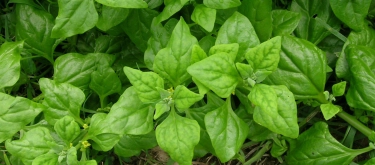Watercress: Taste Profile, Aroma, Benefits and Health Risks
Watercress is a peppery, nutrient-dense leafy green from the cruciferous family, related to broccoli and kale. Known for its distinct, slightly spicy flavor, watercress has been enjoyed in various culinary applications worldwide, particularly in salads, soups, and garnishes.
What does Watercress taste like?

Watercress has a fresh, peppery flavor with a slight bitterness and hints of mustard. Its taste is often described as a mix of radish and arugula, with a spicy bite that adds brightness to dishes. The aroma of watercress is subtle and green, with a fresh herbal quality that complements its peppery taste.
Taste and Texture Analysis
- Taste: Boldly peppery and slightly bitter, similar to a cross between mustard greens and radishes. Its spice gives dishes a refreshing bite, while the mild bitterness adds depth.
- Aroma: Fresh and green, with faint earthy and herbal notes. The aroma is light, underscoring the leafy quality without overwhelming.
- Texture: Tender yet slightly crisp, with small, delicate leaves and thin stems. When fresh, it adds a pleasant crunch; it softens when cooked, retaining some bite.
In-Depth Flavor Analysis of Watercress
Watercress’s unique flavor profile has layers that become more evident when explored in depth:
- Peppery and Pungent Notes: The primary characteristic of watercress is its peppery flavor, which is sharper and more pungent than many other leafy greens. This spicy note resembles radishes and mustard greens, offering a bold flavor that can stand out in fresh salads or cooked dishes.
- Underlying Herbal and Green Tones: Along with its peppery kick, watercress has a fresh, green flavor that brings a mild bitterness to its taste. This bitterness is subtle, helping balance its spiciness without overpowering other ingredients.
- Absorptive Qualities: Watercress, despite its peppery nature, can absorb mild flavors when added to soups or sautés. It melds with creamy, savory, or umami flavors, which softens its pungency and brings a rounded complexity to cooked dishes.
- Textural Versatility: Raw watercress offers a crisp bite that complements fresh dishes, while cooking transforms its texture, making it softer while preserving a bit of firmness that adds body to soups and sautés.
How Can Watercress Be Used in Cooking?
Watercress is versatile and can be enjoyed both raw and cooked in a variety of dishes:
- Salads: Watercress’s peppery flavor adds a refreshing bite to salads, often paired with sweeter greens to balance its spice.
- Sandwiches and Wraps: Fresh watercress makes an excellent addition to sandwiches and wraps, where its spice enhances rich flavors like cheese or smoked meats.
- Soups: Watercress is commonly used in soups, especially cream-based ones, where it adds a delicate, peppery flavor that blends well.
- Stir-fried or Sautéed: Lightly sautéing or stir-frying watercress mellows its spice and highlights its fresh green flavor, making it an ideal side dish.
- Pesto and Sauces: Watercress can be used in pesto or blended sauces, where its flavor adds a distinctive edge to the mix.
Health Benefits of Watercress
Watercress is a nutrient powerhouse, offering a wide range of health benefits:
- Rich in Antioxidants: High in vitamins A and C, which help reduce inflammation and support immune health.
- Bone Health: Contains significant amounts of vitamin K, crucial for bone strength and health.
- Supports Eye Health: Vitamin A and lutein in watercress support eye health and may reduce the risk of age-related vision issues.
- Potential Cancer-Fighting Properties: As a cruciferous vegetable, watercress contains compounds that may help reduce cancer risk by protecting cells from damage.

Are There Any Precautions When Consuming Watercress?
Watercress is generally safe, but there are a few considerations:
- Thyroid Sensitivity: As a cruciferous vegetable, watercress contains goitrogens, which can affect thyroid function if consumed in very large amounts by individuals with thyroid issues.
- High Nutrient Density: Due to its potent nutrients, excessive consumption may interfere with certain medications, especially blood thinners, due to its high vitamin K content.
How to Choose and Store Watercress?
For the freshest watercress, follow these tips:
- Selection: Look for vibrant, dark green leaves without yellowing or wilting. The stems should be firm and slightly crisp.
- Storage: Store watercress in a plastic bag or container in the refrigerator, with a damp paper towel to keep it fresh for up to 4 days.
Fun Facts About Watercress
- Ancient Use: Watercress has been used since ancient times, dating back to the Greeks and Romans, who prized it for both flavor and medicinal uses.
- Water-Grown: Watercress is often grown in flowing water sources or hydroponically, which gives it its fresh, clean taste.
- Nutritional Density: Watercress is considered one of the most nutrient-dense greens, often topping lists for its vitamin and mineral content relative to calorie count.



